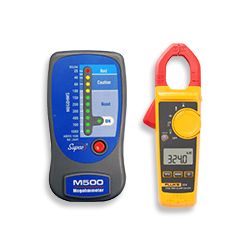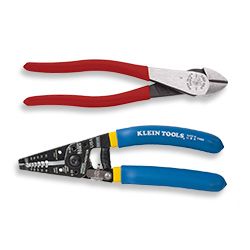
Is the HVAC industry up in the air?
In this video, Jose De la Portilla, a technical training manager at Lennox, shares how he got started in the HVAC industry and the opportunities available for a satisfying career in the field.
What happened to the heating, ventilation and air conditioning (HVAC) industry?
In the last few years, construction jobs have been slowly inching their way back up to normal numbers, from when the housing bubble burst in 2007. While many construction trades saw their labor force decline, none took a hit like the HVAC industry. This is the one trade that’s not returned to normalcy. To date, HVAC has been down approximately 20,000 workers.
The Bureau of Labor Statistics (BLS) predicts the HVAC industry will grow by as much as 3 percent between now and 2020, an amount that equates to nearly 90,000 jobs. With growth of this scale on the horizon, new workers in the industry couldn’t be in greater demand. This is especially true in cities such as Seattle, Dallas, New York City, Chicago and Denver.
Another major reason for the insufficient workforce is that 17 percent fewer people are working in construction nationwide than at market peak. Some states, including Arizona, California, Georgia and Missouri have seen declines of 20 percent or more, according to data from the Associated General Contractors of America (AGCA). Since 2007, many technicians from the Baby Boomer and Gen-X age groups have retired or left the job market. This mass exodus has left a large void in the industry.
Schools are heating up
So what’s needed to get the HVAC industry back on track and replenished with fresh, new HVAC technicians who are ready to embark on an exciting and challenging career? Some schools are starting as early as junior high to encourage kids who are not inclined to college to consider looking into a career path in HVACR (heating, ventilation, air conditioning and refrigeration).
One school in particular, Dulaney High School in Baltimore County, Maryland offers an HVAC program to students. The only program of its kind and the only one of Maryland’s 13 such programs to be offered at a non-technical high school, it’s changing perceptions about the value of a vocational education. Students at Dulaney have technology education, engineering and HVAC classes to choose from. More than a dozen program graduates now work in the HVAC industry full-time, while dozens more have completed internships, worked in summer jobs or gone on to pursue careers in related fields.
HVAC is a cool career
Career paths are divided into either residential or commercial, which means you can go the route of providing heating and air services to homes or commercial customers. The work is physically and mentally challenging.
Physically, you need to crouch-down through tight spaces to get air ducts, wiring, work in low-hanging beam attics or move around in dusty crawl spaces, up and down ladders, and work in diverse weather conditions, from intense heat to bone-chilling cold.
Mentally, you need to know quite a bit about how things work, like an engineer. There’s a lot of math involved: Formulas, ratios and calculations. There’s even some physics. It takes a curious, logical mind to deduce a solution or an alternative way to solve problems out in the field.
Most HVAC Pros agree that getting training and obtaining a license, getting an in-depth knowledge of heating and air conditioning is the more successful path to having a lucrative, sustainable career. The career path in general takes at least eight to ten years to become proficient, as there is so much to learn.
Making money – how much can you make?
According to the BLS, the national median salary estimate in May 2017 was a mean annual salary of $48,320, and a mean hourly wage of $23.23. The BLS predicts the demand for qualified, well-educated HVAC technicians will grow 21 percent through 2022. This is nearly double the growth rate of all other jobs.
Training is essential for success
You cannot work as an HVAC technician without training and licensing. Very few service specialists learn on the job, however. The vast majority of successful, fully-employed HVAC technicians attend technology training schools where they can learn to handle the full range of equipment.
As long as you continue to collect work hours and work in some of the highest paying states, and you have a good certificate, your salary will remain stable with increases throughout the years.
A career path in HVAC might be the gateway to a fulfilling future for many young people who do not want to slog it out at a college or university while incurring possible student debt. With unique business opportunities and interesting mechanical, engineering-like problems to solve, HVAC could soon be on an intense rebound.
HVAC is a technical field. It takes dedication and training. The first part is up to you. Training, we can help you with. BuildATech™ is our intensive, four-week training program that covers everything from HVAC basics to becoming a NATE certified technician.
Online training is a thing, too. If you can’t make it to BuildATech™ yet, get started with this online training curriculum, “Technician Learning Paths 1 - 6.”
Getting started in the industry? Make sure you’ve got the LennoxPros app in your toolbox, along with all the hand tools and testing instruments you'll need to get the job done well.


